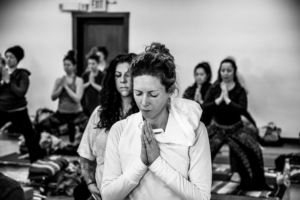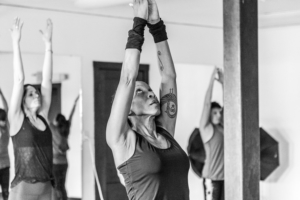There are lots of yoga trainings in Denver. Each with its own approach and clientele. Here is a traits of yoga teacher training students that resonate with us. And, in full disclosure, the qualities that don’t.
- Yoga is not a fad for you.
- You want to teach yoga (formally or informally). You know that life can be impossibly overwhelming. People struggle to manage their emotions, feel trapped within their lives, and spiritually depleted. Yoga helped you to address all of that and it can help others as well.
- You are easy going, friendly, giving and supportive of one another. You can get on board with a culture of ‘service’ and ‘support’.
- Value being punctual, and starting class on time out of respect for your peers. You participate in classes and workshops by asking questions and even challenging some of the ideas presented.
- You have a home practice (in some capacity) and want the most of each class.
Other Traits of Yoga Teacher Training Students…
- You are willing and able to complete assigned papers and readings.
- Crave to know yourself more fully and to be inwardly resourced when facing the challenges of life. You stretch into new territory and the discomfort that may go along with that
- You regard the roots of the yoga tradition. You want classic teachings beyond common cliches such as “this practice is for you”.
- You have a genuine interest and curiosity about yoga beyond simple asana. Asana is a means to a much greater end that includes stability, equanimity, and spiritual development.
- You have been doing yoga for 2-10 years.
- Are drawn to a yoga teacher training with these kinds of reviews
And we have a special place in our hearts for people who…
- You desire conversations and philosophies with depth. You value wonder and mystery more than “knowing things”. Our yoga training content is multidimensional.
- You can be open, honest and self-reflective and are willing to be vulnerable.
- If I ran into you at Natural Grocers (Vitamin Cottage), at the Tattered Cover bookstore, we could strike up a nice conversation
- You are dubious of excessive technology and excessive materialism.
- A rich supportive community of like-minded seekers is your jam
- You care about the welfare of the underserved and may want to bring yoga to those communities. You resonate with underground movements that do a lot of good although they don’t get much recognition.
- Appreciate that we are a good-hearted and small business. Some administrative details will feel more like a drive through a scenic country road than mainlining on the interstate.
- You continue to seek balance in your life between your own needs offering help to others.
The following kinds of people are not a good fit:
- People who are not interested in introspection and just want the yoga teacher training certification
- Principally want to study yoga as a form of exercise, and no interest in the entire scope of yoga, including spiritual or personal growth
- Habitually late, and have minimal regard for the collective learning environment
- Are better suited for a luxury cruise liner than being on a sail boat working side by side with their peers actively contributing to complete the journey together
- Dependent on technology and could not envision a class, a 10-minute break, or even shavasana without checking their phone
- Have no interest in personal development.
- Are exceedingly dependent upon mobile devices. They could not see themselves getting through a lecture, or even a 10-minute break without logging in.
Ever studio has its own culture and set of expectations. These traits of yoga teacher training students offer a clear indication of whether or not our program is a good fit for you. Go with a program that most resonates.




